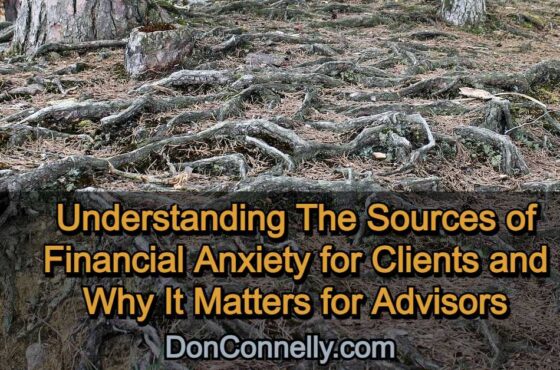How to Turn Data Collection into a Process Your Clients Will Appreciate
 Financial advisors love data—until it’s time to collect it from a new client. Advisors know that data collection is an essential component of the planning process, without which they can’t get an accurate picture of their client’s current situation. But mining all the critical data needed to connect current circumstances to future aspirations can be tedious—for both advisors and clients.
Financial advisors love data—until it’s time to collect it from a new client. Advisors know that data collection is an essential component of the planning process, without which they can’t get an accurate picture of their client’s current situation. But mining all the critical data needed to connect current circumstances to future aspirations can be tedious—for both advisors and clients.
It can also be a point of tension in a new advisory relationship, as new clients may still be working through trust issues. Advisors must understand this and continue working fervently to earn their client’s trust by expertly shepherding them through the process. While getting the data is important, advisors need to use this moment as another opportunity to engage their clients on a deeper level, focusing as much on the qualitative side as the quantitative side of data collection.
Data collection is not just about the data
The chief complaint among many advisors is that clients are not prepared to provide the necessary data. They’re often disorganized or unaware of the intricacies of their financial makeup. That’s why we suggest, as the first step in the data-gathering process, helping the client to get organized financially. The getting organized step is not only critical for gathering critical documents but also for providing an appreciated value-add service.
Having access to a client’s financial documents at the end of the first step allows you to collect much of the necessary data on behalf of the client, enabling you to prefill a significant portion of the data collection form. The data collection interview can then be used to fill in the blanks and as an opportunity to delve into the qualitative aspects of their financial situation.
Build trust and solidify the relationship by emphasizing qualitative over quantitative
For instance, when confirming the data collected from their documents, you can spend more time probing clients on their reasons for investing in certain assets and how they feel about their investment performance. You can talk about their current debt and their views on indebtedness. As you discuss their life insurance, you can discuss their concerns for protecting their family. As you discuss their retirement plan holdings, you can discover more about their life ambitions.
The qualitative answers you receive can be much more important than the quantitative answers because they provide insight into your client’s attitudes and beliefs about money and how they prioritize certain aspects of their financial life over others. In other words, they can inform how you formulate, personalize, and present your solutions.
Equally important, emphasizing the qualitative aspects in the data collection interview engages clients on a deeper level than just asking them about their money, which helps you further gain their trust while solidifying the relationship.
Use qualitative method to ascertain assumptions
One of the more critical components of the data collection step is ascertaining the assumptions to be used in the planning process. A financial plan is only as good as the data collected but only as realistic as the assumptions used. Unrealistic assumptions lead to an unrealistic financial plan, which can lead to a lack of conviction by the client in adhering to the plan.
Most clients have never considered assumptions like inflation, future income growth, investment returns, life expectancy, and lifestyle expectations in retirement. Some advisors make the mistake of plugging in their own assumptions, assuming they know what’s best for the client. But that just opens the door for the client to question the plan’s validity later.
It’s also a missed opportunity for the advisor to further engage the client by educating them on how certain factors and variables can impact their financial plan. As their advisor, you should share the general norms, give them a range to consider, offer your logic behind choosing a particular assumption, and then let your client decide. Sharing your experience and engaging in some debate can help you and your client get on the same page. Ultimately, you want your client to “own” the assumptions.
Use every opportunity to educate your clients
Speaking of educating the client, using the qualitative interview method for collecting and confirming data and ascertaining assumptions allows you to showcase your value as a financial expert and teacher. It creates many opportunities to help your clients better understand the various elements of their financial situation and how their decisions impact their financial future—again building more trust and solidifying your relationship.
The data collection step has always been challenging for advisors and clients alike. By breaking the data gathering process into three parts—Getting Organized, Goal Setting, and Data Collection—advisors can eliminate the tedium while providing a more personalized experience your clients will value. By the time you reach the data collection step, you will have broken down any trust barriers, and your new clients will like the relationship that has been well established.
Watch this 3-minute video to learn how our 24-step training program can help you become brilliant at the basics and take your business to the next level!
See program details and enroll today!
Available as a self-paced program (always open) and as a 12-week coaching program (open only a couple of times a year), this training will change the way you view your practice and will give you an enormous advantage over your competition. Select your format and enroll today!



